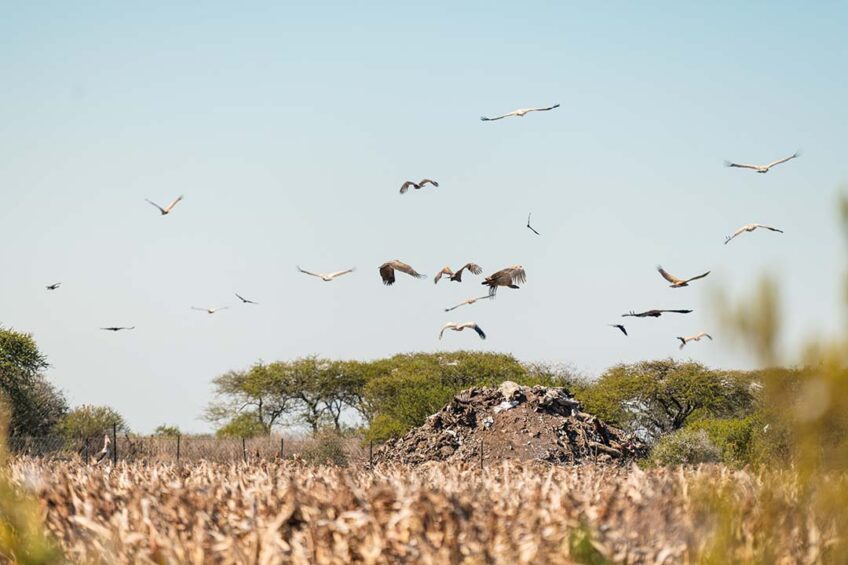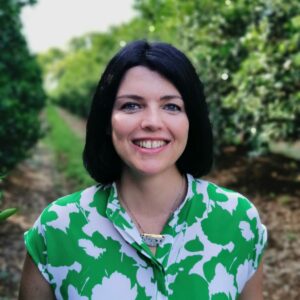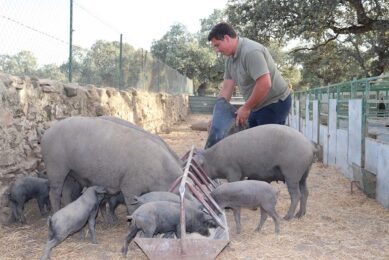Farm visit: Vultures clean-up on this pig farm

Mortalities leave pig farmers with a considerable burden in discarding the carcasses, especially in trying to reduce the farm’s environmental footprint. In South Africa, farmer Johan van der Walt has found a solution that not only lightens his impact, but solves a critical problem in the area: dwindling vulture populations.
The Springbok Flats of Limpopo, South Africa, were once abundant with game, as the name denotes. Over time, as early settlers moved into the area, game populations dwindled, replaced by farming activities. While much of the area to the north is still inhibited by large numbers of game, thanks to wildlife reserves, the southern region where Van der Walt farms is dominated by crop and livestock farms.

Mortalities
Johan van der Walt is a second-generation farmer: his parents started with Walt Landgoed in the 1950s. The crops, cattle and pig divisions have been expanded substantially since Van der Walt joined the farm in 1979, with the pig division alone doubling in size. With an expansion in pig numbers, an increase in the number of mortalities has naturally followed, creating a bigger problem for waste disposal.
“With any population of intensively farmed animals there are mortalities. Even at a 5% mortality rate, there are still animals that need to be disposed of,” says Van der Walt. “Then there are also afterbirths and piglets born dead that we need to dispose of. Farmers mostly rely on two options: burning the carcasses or burying them. The former has a big polluting effect on the atmosphere, while the latter requires much land and the daily digging of holes.”

Nature’s cleaners
A solution presented itself 3 years ago when the farm’s veterinarian Dr Andrew Tucker saw an opportunity to solve 2 problems within the area at once. A self-confessed birdie, Dr Tucker realised that the pig carcasses could provide a stable food source for the area’s vulture population, which was dwindling due to urbanisation patterns and a lack of food.
Vultures are listed as an endangered species in South Africa. VulPro, a vulture conservation programme, states that some vulture species have declined by over 95% in the last 30 years.
“Vultures are nature’s clean-up crew,” says Tucker. “They will pick a carcass clean until only the bones remain, effectively ridding the environment of diseases, which would otherwise spread.”
Flying distance proves little effort
In the Settlers area, vultures are found to the north, where they live in the mountains. The 100 km flying distance to the Van der Walt farm is however little effort, since they rely on air streams to carry them. As food sources in their natural habitat are often lacking, the hefty lunch on offer at the farm is especially alluring.
Vulture restaurant
Dr Tucker suggested that Van der Walt create what is termed a vulture restaurant on his farm, where the birds can freely feed, undisturbed. This consistent supply of food would also bode well for growing the vulture population.
Van der Walt erected a 1 ha camp, fenced and locked, with a water supply and concrete furrows beneath the fences to prevent other predatory animals like jackals from stealing the vulture’s food. The secure fencing is required to keep poachers out, as vultures are highly sought after for the traditional medicine market in Africa. The enclosed camp also means that other animals cannot enter the area and potentially spread diseases from the carcasses to the rest of the farm. Since the vultures do not land where there is human activity, they avoid other areas of the farm, or farms in the region, and so diseases are not spread from one area to the next. Since the vultures devour the entire carcass, they effectively remove any diseases that could have been present in the meat.

Vultures finally discover the site
Once the camp was completed, fresh carcasses, brought with a pick-up truck and 2 workers, were offloaded into the camp and Van der Walt waited for the vultures to arrive. And waited. As the carcasses stood untouched, Van Der Walt had to periodically remove them and dispose of them in the traditional way – by burning – since they could not be left to rot in the open.
He just about gave up when, 18 months after the camp was built, a farm worker reported that the birds had arrived. “Our farm does not lie on the traditional flying route of the vultures, so it took some time for them to discover the restaurant. The long wait taught me patience. Sustainability in any form does not happen overnight, and it was an important lesson to learn for the whole farm’s sustainability journey,” Van der Walt relates.
They come to ‘work’ everyday, without cost other than me needing to place the pig carcasses there
Second restaurant
Since then, Van der Walt has set up a second restaurant to the east of the farm, which drew vultures quicker since they were already in the area. Some days, the 2 restaurants are luring more than 200 vultures, eating on average 800 grams of meat each. Since the birds are people-shy, they do not enter the camp until well after the carcasses have been offloaded and they are sure it is safe to land and feast. Even more encouraging is that Van der Walt often spots young birds, signs that the flocks are multiplying. Growth in the local vulture communities has been confirmed by VulPro.
Van der Walt points to the symbiotic relationship between him and the vultures: “They come to ‘work’ everyday, without cost other than me needing to place the pig carcasses there. In turn, I have a clean way of disposing of the carcasses, while the vultures have access to a consistent food supply.”
Responsible producers
Van der Walt is part of a growing group of pork farmers in South Africa who are actively working to lighten their environmental footprint. “Agriculture and nature are intrinsically linked,” says Van der Walt. “To be a successful farmer, you need to love nature and animals. These are the resources farmers are given and they need to be looked after, or there will be nothing left for the next generation.”
Health management practices
The restaurant has meant that Van der Walt had to change the health management practices in his pig herd to ensure that medicines administered to the pigs do not harm the vultures. This has had an additional positive impact on his farm. “The wrong anti-inflammatory medication, for example, kills vultures so we no longer use any. The antibiotics we use also needed to be changed to ensure there is no harmful effect on the vultures.”
Not a tourist attraction
While such a concentration of vultures would easily attract bird-lovers from all over the world, Van der Walt is cautious in keeping people away from the site. “They will not eat where there is constant movement and people, so it is not a tourist attraction. It is purely for the sake of sustainability.”
Leaders in sustainable pork production
South Africa’s pig farmers are quickly becoming leaders in sustainable pork production, with great care being taken to lighten their environmental footprint and paying greater attention to animal welfare. Van der Walt’s vulture restaurant is an example of how farmers are thinking out of the box to find more sustainable methods of production. “Nature supplies me with soil, water and animals, and so I also need to give back to nature and protect it. In this case, I have the vulture restaurant.”








